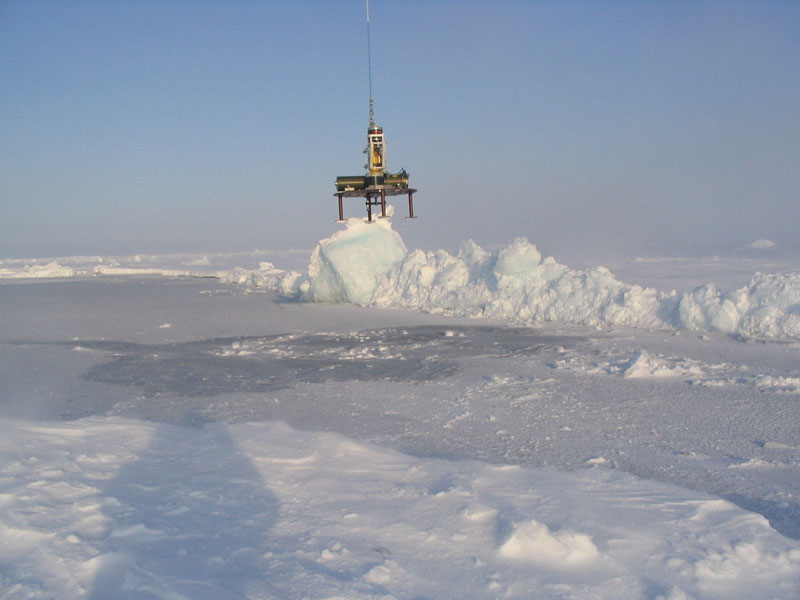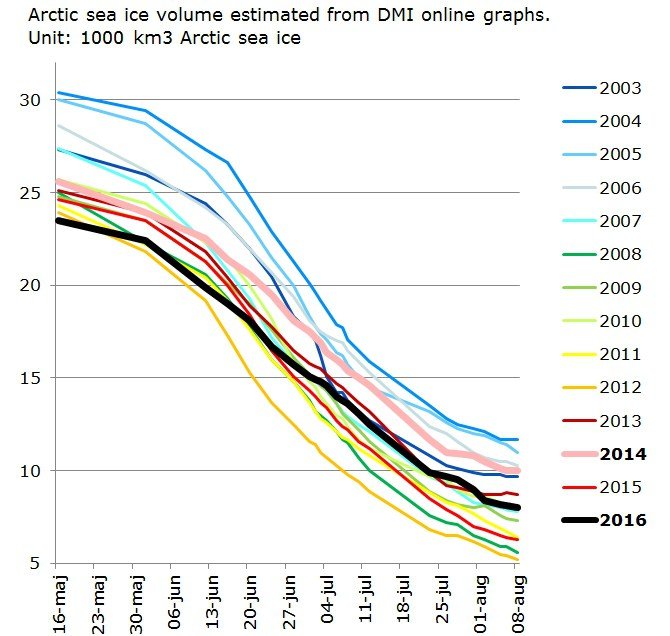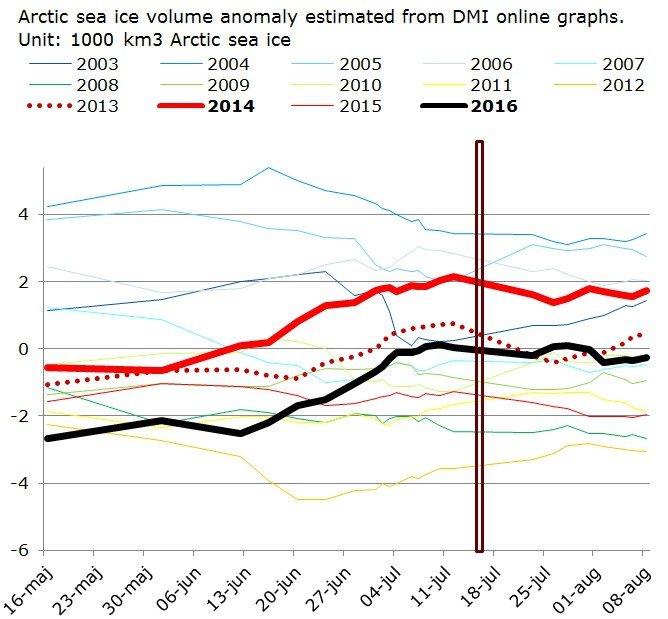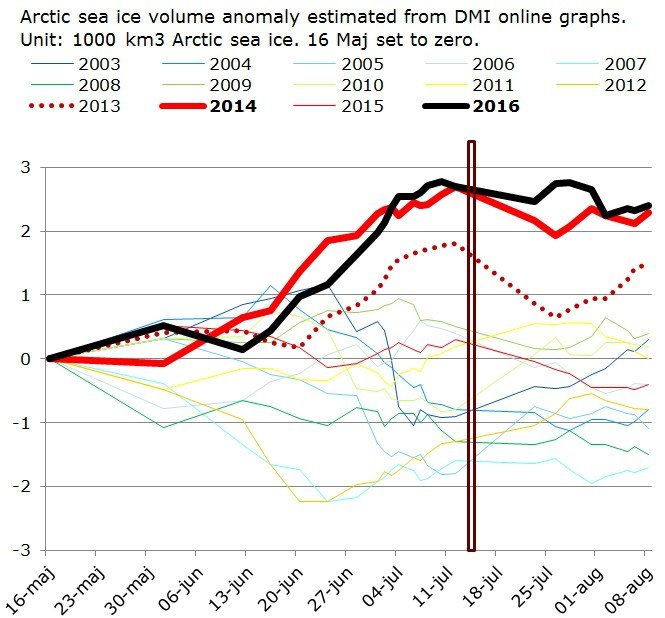
So, first I plotted all years available, 2003 - 2016 for the period May 16 to Aug 8 to show the melt season. Not all dates in the period was used, but enough to get the overall picture.
The first that caught my interest was obviously how 2016 was "performing" in comparison with the other years 2003 - 2015. The winter winds Nov 2015 - Feb 2016 were quite harsh to the ice as it was generally blown towards the Atlantic via East Greenland. This may explain the very low levels of ice volume May 2016. Whatever the reason for this low level of ice volume May 2016, it appears that 2016 during summer melt did not melt as fast as most other years.
Then I noticed 2014. This year started out much better than 2016 with more ice, but it was remarkable that 2014 and 2016 both show this "pattern" of reduced ice melt in the summer period.
Thus, in order to study this a little closer, I redrew the graph: Below is now plotted the ice anomaly as estimated from DMI graphs.
It becomes clear, that 2016 and 2014 and to some degree also 2013 show remarkably more gain in ice volume anomaly that all other years. After July 16, most years seem to stick somewhat to the new level of ice volume anomaly.
Just to illustrate more clearly I set ice volume anomaly curves to zero for May 16.
2014 and 2016 gained around 2500 km3 of extra ice volume anomaly May 16 July 16, and 2013 accumulated around 1500 km3. These are large numbers and illustrates that the summers in the Arctic indeed can change the game - not only to melt the ice away fast, but certainly also to lift the volume of sea ice volume anomaly to a new level fast.
Thus, 3 out of the 4 most recent years ranks number show increase in ice volume as not seen since 2003. Is this a sign of a real game changer for climate? If this tendency continues into La Nina times and continued low Solar Cycle activity years, the massive rebound of Arctic sea ice may be much closer than most would expect at this point.
What is also truly remarkable is that the year 2014 actually for Aug 8 had just as large a volume of ice as 2003 and 2006. This certainly shows that we are not in a situation of "point of no return". It seems we can return to pre-2007 ice volume levels any year.
Link to DMI sea ice thickness / volume site






[Link]